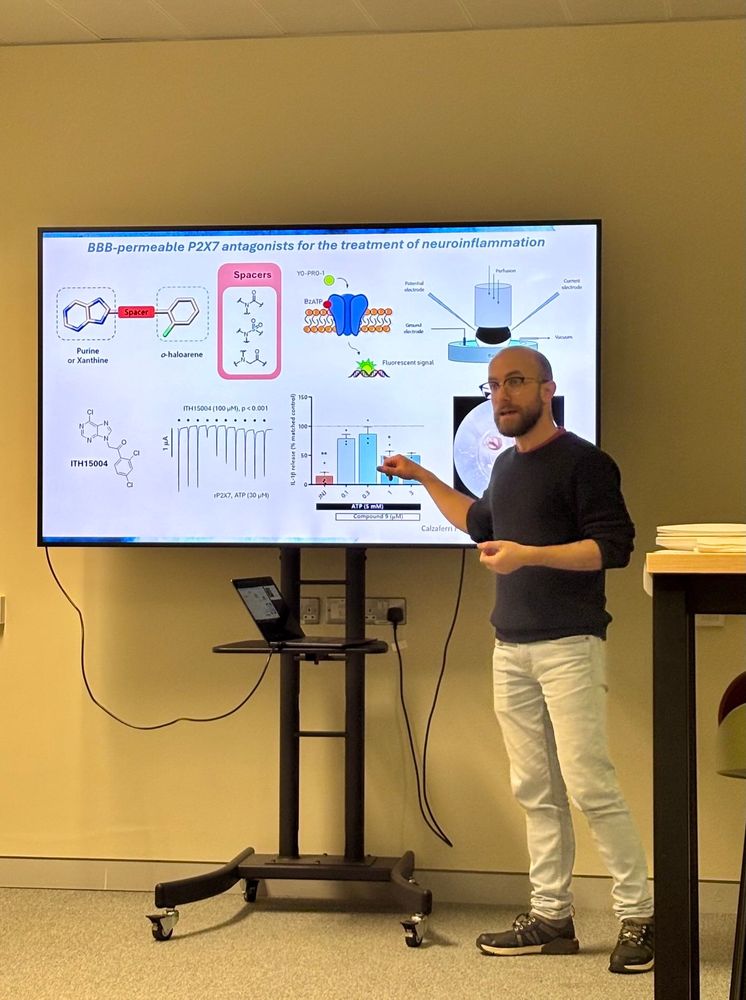
🧫 Drug delivery 🧬Epigenetics ⚗️ P2X7 receptor
@dublincityuniversity - Dublin 🇨🇮
@fondationarc @cnrs - Montpellier 🇨🇵
MSCA PhD @purinesdx - Madrid 🇪🇸
From 🇮🇹

We have finally found out how to increase our flavanones stability and obtain DNA methyltransferase inhibitors with nanomolar potency 🥳
pubs.acs.org/doi/full/10....

@sfrre-ecr.bsky.social @researchireland.ie @dcu-lsi.bsky.social

@sfrre-ecr.bsky.social @researchireland.ie @dcu-lsi.bsky.social
We have finally found out how to increase our flavanones stability and obtain DNA methyltransferase inhibitors with nanomolar potency 🥳
pubs.acs.org/doi/full/10....

We have finally found out how to increase our flavanones stability and obtain DNA methyltransferase inhibitors with nanomolar potency 🥳
pubs.acs.org/doi/full/10....
💼 Sponsorship starts at just €300. Showcase your brand to world-leading scientists!
📩 Get our partnership kit: chembioparis2025.com
#ICBS2025 #ECBS2025 #ChemBio

💼 Sponsorship starts at just €300. Showcase your brand to world-leading scientists!
📩 Get our partnership kit: chembioparis2025.com
#ICBS2025 #ECBS2025 #ChemBio
Details here: www.fondation-arc.org/projets/recr...
Interested? Contact us!
Details here: www.fondation-arc.org/projets/recr...
Interested? Contact us!
But I don't wanna remove the picture of me in the Katherine Gorges in Australia 🥲🦘

But I don't wanna remove the picture of me in the Katherine Gorges in Australia 🥲🦘
Our group leader Prof Silvia Giordani tells you about it in this video! 👇🏻
I enjoyed so much this filming session 🤣 and the result is amazing!
@dublincityuni.bsky.social @dcu-lsi.bsky.social @dcuresearch.bsky.social
youtu.be/sAAvrxyg-BI?...

Our group leader Prof Silvia Giordani tells you about it in this video! 👇🏻
I enjoyed so much this filming session 🤣 and the result is amazing!
@dublincityuni.bsky.social @dcu-lsi.bsky.social @dcuresearch.bsky.social
youtu.be/sAAvrxyg-BI?...
@sciencespinning.bsky.social
@irishtimes.com
@dublincityuni.bsky.social
@researchireland.bsky.social

@sciencespinning.bsky.social
@irishtimes.com
@dublincityuni.bsky.social
@researchireland.bsky.social
We have developed B/N carbon nano-onions properly functionalised to target brest cancer cells 🧫
Go have a look! 🤗🎉
@dcu-lsi.bsky.social @dublincityuni.bsky.social
pubs.rsc.org/en/content/a...

We have developed B/N carbon nano-onions properly functionalised to target brest cancer cells 🧫
Go have a look! 🤗🎉
@dcu-lsi.bsky.social @dublincityuni.bsky.social
pubs.rsc.org/en/content/a...



Here's finally the 1st paper of the efforts Alex & I have made to try to improve these molecules.
But beware! Hopefully more will come soon! 🧑🏻🔬 Enjoy!
www.sciencedirect.com/science/arti...

Here's finally the 1st paper of the efforts Alex & I have made to try to improve these molecules.
But beware! Hopefully more will come soon! 🧑🏻🔬 Enjoy!
www.sciencedirect.com/science/arti...

